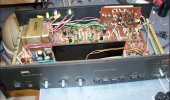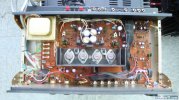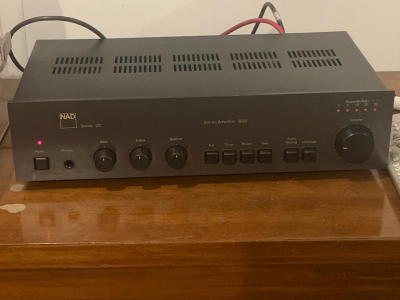The 3020e and i versions have some mods over the original design. These differences are essentially noticeable mostly when using a phono source. Otherwise they sound essentially the same to the normal ear. The phono stages of the 3020e and i are different from the older versions. By the time the e and i came out, cassette decks had started to dominate and CDs were slowly taking over while turntable use was on the way out. This can be noticed in the simplified phono stage design of the e and i versions. Also the myth of the 3020 sound is strongly attributed to the component layout on the PCB, of the original version. The 3020 series-1, series-2, A, and B maintained the basic layout except for some basic changes between series-1 and series-2, which were retained in the A and B versions. The e and i had a revamped layout (which purists believe, caused the e and i to loose the original 3020 charm). These are all myths and opinions. To me it sounded quite the same. There is another myth, the silver paneled 3020 sounded better than the grey panel one. Anyone who knows the inside will tell you that the silver 3020 was essentially the grey 3020 series-2 with a painted faceplate, knobs and buttons

Personally, I have owned or repaired all 3020s versions that have been made, and i found the original 3020 series-2 to be the best sounding of the lot. Again, this is a very subjective statement as all the amplifiers that i experienced were not in the same condition, some had been repaired, some had been recapped, etc and hence even my opinion is up for debate.
Just in case you were wondering what is this series-1 and series-2 and how different is this from the A, B, e and I - well the original 3020 (without any alphabet suffixes) debuted around 1977 and this is considered series-1. This version had an additional powersupply PCB (for the preamp and pre-driver stages of the poweramp) bolted to the back panel and the power transformer was bolted to the bottom frame of the amplifier chassis. Around 1980, NAD redesigned the 3020 and released series-2 which did away with the additional powersupply PCB and had the power transformer bolted to the back panel. This is the highly sort after version (and the same version which was released with a silver face plate). For those who are into the serial number classification stuff, the amplifiers that have serial numbers before A3205011 are considered to be series-1 and those with serial number A3205011 onwards, are series-2 models, running up to the next generation which was the 3020A. There were may iterations of the 3020s, especially the original series-2 and can be found in the form of American versions, European versions, Asian (far-east) versions, etc. All these are essentially the same with different power transformers, switched AC outlets, etc

Hope this helps.




